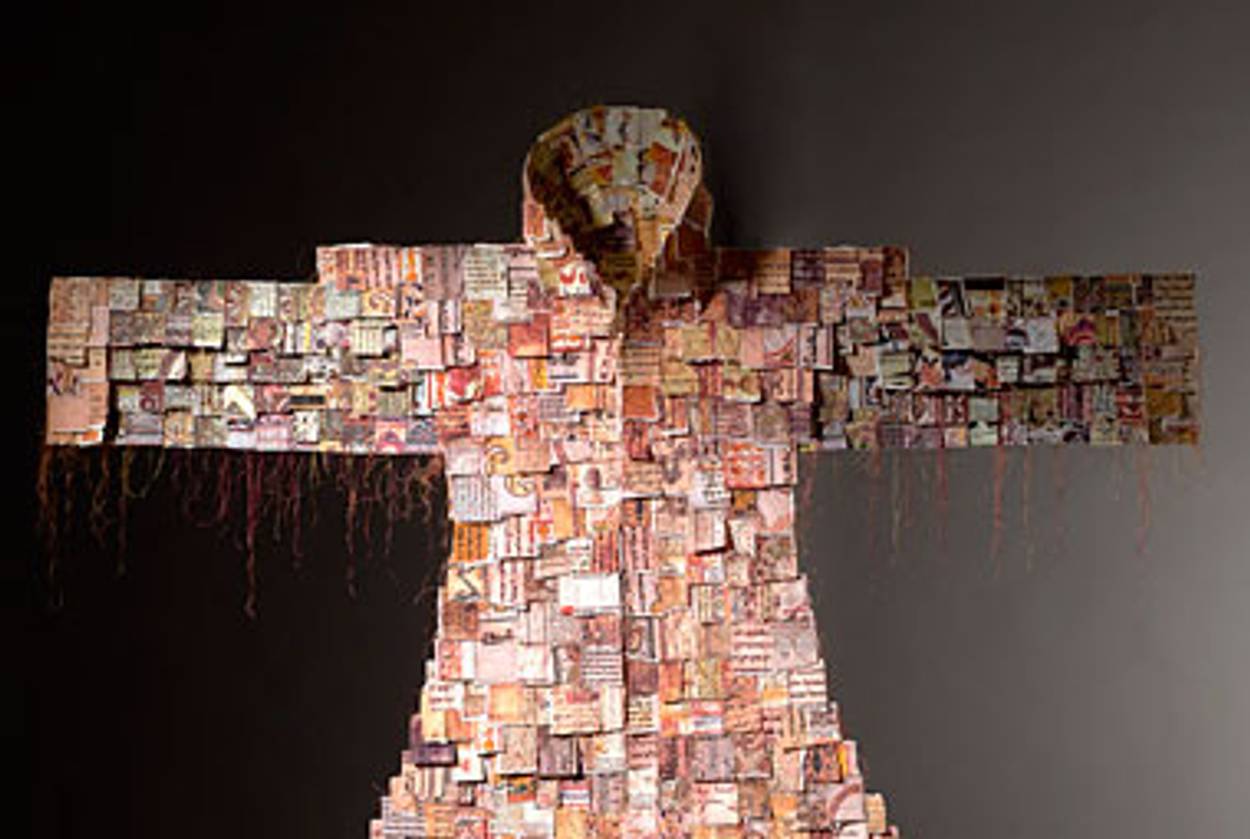Unchained
While trying on new artistic hat, artist develops series of paper coats




Until a few years ago, artist Andi Arnovitz did the bulk of her work at the Jerusalem Print Workshop, Israel’s best-known graphic arts studio, and she focused most of her energy on printmaking. But then, in what she describes as a “watershed moment,” Arnovitz encountered the work of sculptor, printmaker, and collagist Kiki Smith, and everything was different. Faced with the breadth of Smith’s work, Arnovitz felt liberated.
“I decided that wherever my ideas take me, I should follow them,” she recently told Tablet Magazine.
Arnovitz proceeded along the path blazed by artists like Smith, Louise Bourgeois, and Judy Chicago, as she explored the intersections of feminism and Judaism—and how they are made manifest in the life of an American-born woman living in Jerusalem. Arnovitz began embracing embroidery, needlepoint, decoupage, batik and other methods traditionally classified under the rubric of “women’s arts” in a self-conscious effort to situate her work along the fault line between craft and fine art.
In the exhibition “Tear/Repair,” a series of paper coats based on Jewish women who have changed the world, Arnovitz’s revised artistic vision is on full display. The show, which goes on display tonight at Brandeis University’s Kniznick Gallery, is an exploration—in a mixture of forms old and new—of tradition and modernity, rupture and reconciliation.
The coats, Arnovitz said, grew out of her perception that “there is no single ethnic garment that loudly and clearly says ‘Jewish woman.’ In her proposed remedies, which often look simple and shapeless, the message is contained in the materials used.
One series of coats is devoted to agunot, the so-called “chained women,” who, according to Jewish law, cannot remarry due to their husbands’ refusal to grant a divorce, or inconclusive evidence of a husband’s death. Arnovitz obtained and photocopied hundreds of ketubot (marriage contracts), and tore them into small pieces. With thread she affixed the fragments onto massive paper coats. The sleeves, hems and collars were sewn shut, and the threads, evidence of her painstaking process, were left hanging, a metaphor for the agunah, herself.
“For centuries,” Arnovitz said, “women had few means of creative expression; so many of them poured their talents into the creation of these objects; I attempt to honor these women through my work.”
“Tear/Repair” will be on display at Brandeis until April 26, after which it will move to the Yeshiva University Museum at the Center for Jewish History in Manhattan.
Morton Landowne is the executive director of Nextbook Inc.
Morton Landowne is the executive director of Nextbook Inc.